
6 secrets to successfully grow Echinaceas
To avoid failing them!
Contents
Echinacea, also known as purple coneflower, is a perennial native to North America. Its large flowers with prominent, bristly centres bloom all summer in borders. Although it is reputed to be trouble-free, Echinacea is not so easy to grow if its basic needs are not met: rich, well-drained soil and full sun. Here are all our secrets for successfully cultivating Echinaceas or purple coneflowers.
→ Discover our selection of Echinaceas in our online nursery.
Give your echinaceas a well-drained soil
Echinaceas are relatively hardy (-15 °C) and thrive in a wide variety of soil. However, these perennials require two important things: a rich, deep soil and, above all, very good drainage, as they are particularly sensitive to stagnant moisture in winter (which actually reduces their hardiness!).
When planting:
- Prepare the hole well to a volume at least three times larger than the root ball, and loosen the soil deeply;
- Add some decomposed manure or a handful of dried blood and a good dose of compost. Don’t hesitate to add compost to the surface each spring;
- Improve the drainage of the soil by mixing gravel or clay pebbles with the soil surrounding the roots. Avoid placing them only at the bottom of the hole, as this often does more harm than good by draining all the water just beneath the roots;
- Add a mulch around your echinaceas to keep the soil moist, especially during the first year.
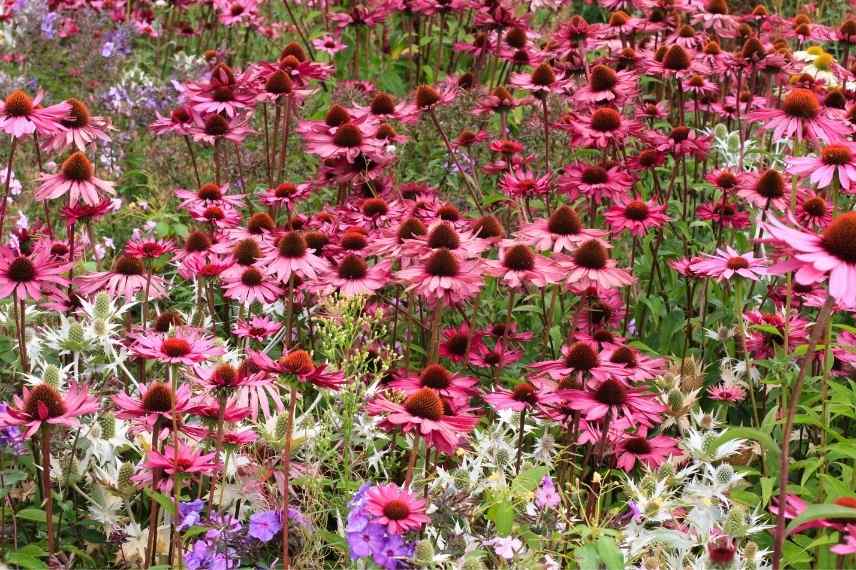
Please note: planting echinaceas should be done in autumn in well-drained soils, but only in spring (between April and May) in heavy soils that warm up slowly.
You can also plant your echinaceas in pots in a rich, light substrate. Just remember not to forget watering in summer.
Read also
Echinaceas : sowing, growing and careSunshine for your flowers!
Echinaceas thrive and bloom in full light. They need light. So forget that ridiculous idea of planting them under trees!
The root system develops within two years and penetrates quite deeply into the soil: consequently, you will need to monitor watering in the year of planting, but afterwards the plant is quite drought-resistant.

Discover other Echinacea - Coneflower
View all →Available in 1 sizes
Available in 3 sizes
Available in 3 sizes
Available in 2 sizes
Available in 1 sizes
Available in 2 sizes
Available in 3 sizes
Available in 0 sizes
Available in 1 sizes
Prune your echinaceas
To encourage flowers to renew, don’t hesitate to remove faded flowers before they produce seeds. This way, flowering will be extended by a few weeks.
A good idea is to practice the Chelsea chop in spring (May-June): this means a light pruning of about one third of the stems so that they ramify and produce more flowers.
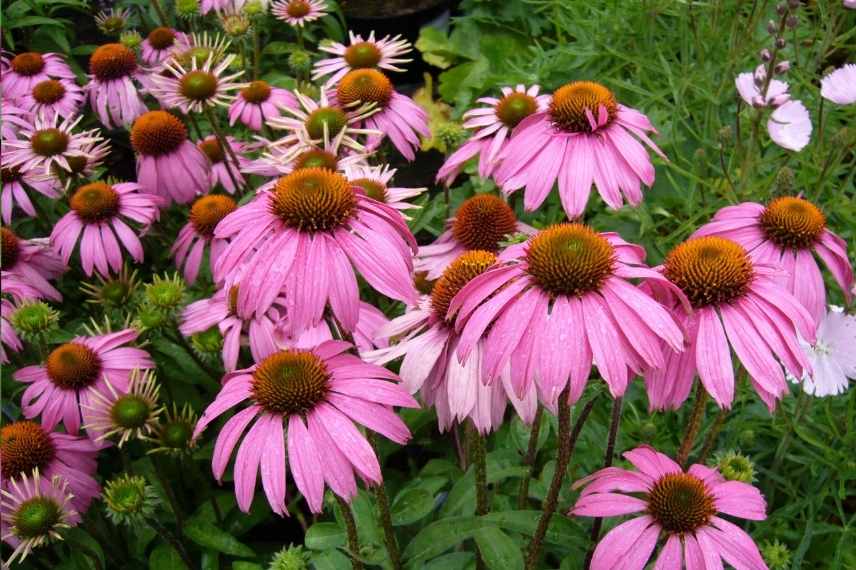
Read also
Choosing an echinaceaDon't disturb your echinaceas too much
Echinaceas need space (5 plants/m²) and prefer to be left alone. Indeed, these perennials take two years to bloom well and dislike being moved. A bit of patience is required, but you will be well rewarded.
However, once every 4 or 5 years, you can divide the stump if, and only if, it seems to be exhausting and blooming less. This operation can be risky for the plant: think twice before proceeding! Keep the largest piece to leave in the same spot, and move the other divisions to different areas of the garden.
→ For everything you need to know about dividing echinaceas, follow Pascal’s advice.

Echinacea purpurea ‘Alba’
Keep an eye on your echinaceas!
Echinaceas are known to be very easy to care for. They are resistant to diseases, drought once well established, wind, and adverse weather conditions in general. However, some pruning is required before flowering, during flowering to remove faded flowers, and in autumn to cut back the deflowered stems. You will need to wait for the ripeness of the seeds if you want spontaneous sowing.
Watch out for slugs and snails in spring as they are fond of the young shoots of echinaceas.
Choose your species or varieties wisely
Double-flowered cultivars (for example, Echinacea purpurea ‘Razzmatazz’) can sometimes be quite temperamental and behave more like biennials than perennials. The Echinacea purpurea species type or very close varieties like Echinacea purpurea ‘Alba’ are not only more accommodating but also have the good sense to self-seed. In short, it is important to choose your Echinaceas based on the beauty of the flowering as well as the hardiness of the variety.
→ Gwenaëlle helps you choose your Echinaceas in her article: Choosing an Echinacea.

Echinacea ‘Ferris Wheels’
- Subscribe!
- Contents
































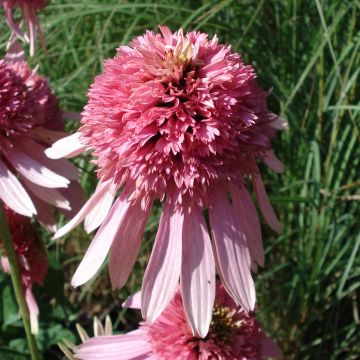


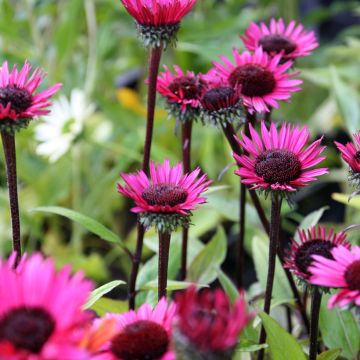
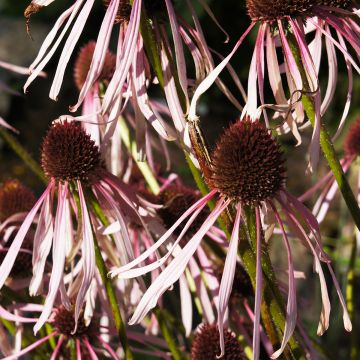




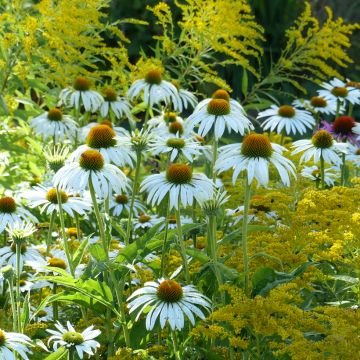
Comments